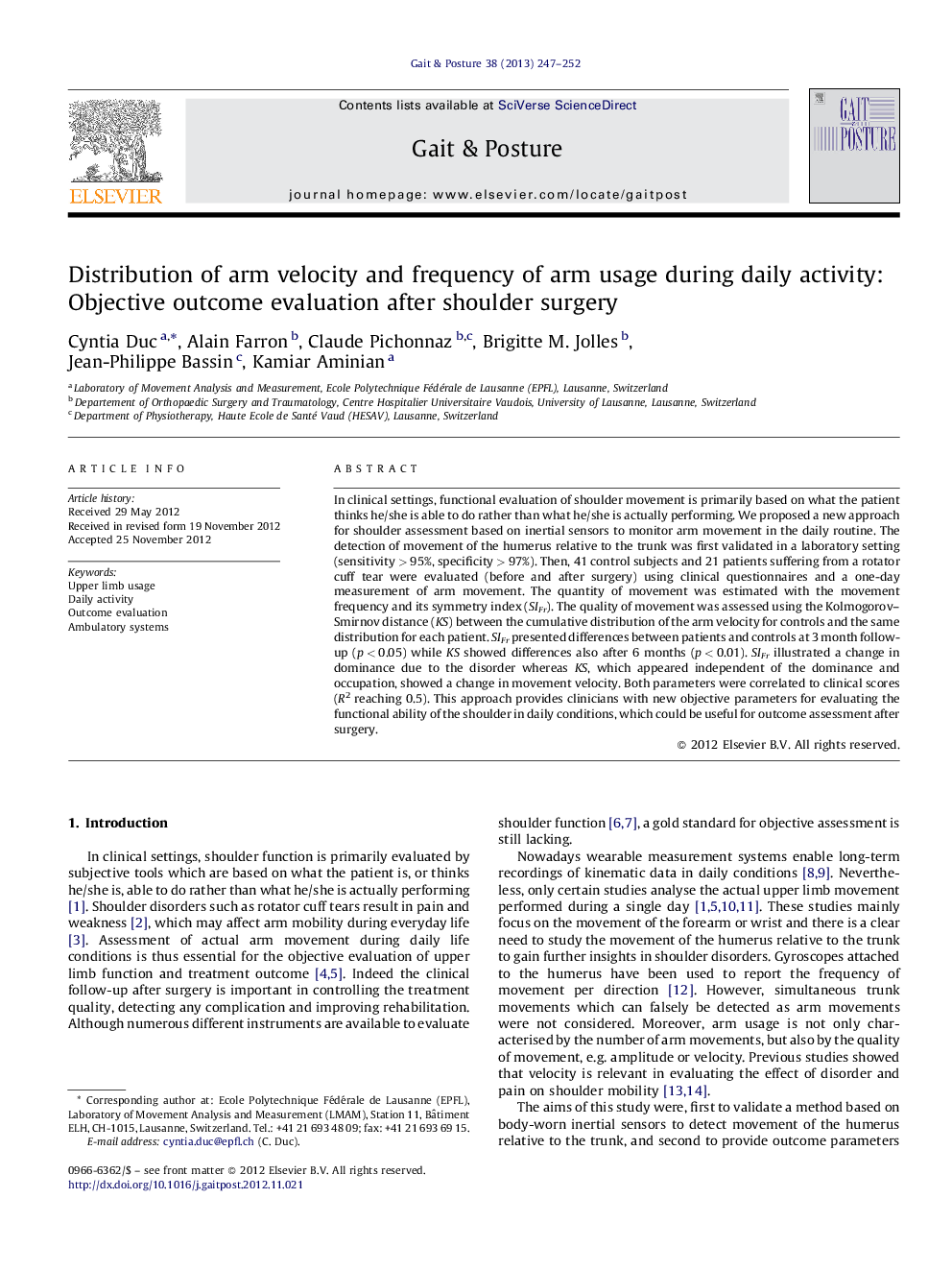| کد مقاله | کد نشریه | سال انتشار | مقاله انگلیسی | نسخه تمام متن |
|---|---|---|---|---|
| 6207334 | 1265658 | 2013 | 6 صفحه PDF | دانلود رایگان |
In clinical settings, functional evaluation of shoulder movement is primarily based on what the patient thinks he/she is able to do rather than what he/she is actually performing. We proposed a new approach for shoulder assessment based on inertial sensors to monitor arm movement in the daily routine. The detection of movement of the humerus relative to the trunk was first validated in a laboratory setting (sensitivity > 95%, specificity > 97%). Then, 41 control subjects and 21 patients suffering from a rotator cuff tear were evaluated (before and after surgery) using clinical questionnaires and a one-day measurement of arm movement. The quantity of movement was estimated with the movement frequency and its symmetry index (SIFr). The quality of movement was assessed using the Kolmogorov-Smirnov distance (KS) between the cumulative distribution of the arm velocity for controls and the same distribution for each patient. SIFr presented differences between patients and controls at 3 month follow-up (p < 0.05) while KS showed differences also after 6 months (p < 0.01). SIFr illustrated a change in dominance due to the disorder whereas KS, which appeared independent of the dominance and occupation, showed a change in movement velocity. Both parameters were correlated to clinical scores (R2 reaching 0.5). This approach provides clinicians with new objective parameters for evaluating the functional ability of the shoulder in daily conditions, which could be useful for outcome assessment after surgery.
⺠We accurately detect arm movement during daily activity using inertial sensors. ⺠We characterise quantity and quality of arm movement in daily routine. ⺠The frequency of arm movement is not lower for patients than for controls. ⺠The symmetry index of frequency illustrates the change of dominance in patients. ⺠Arm velocity distribution is altered in patients suffering from a rotator cuff tear.
Journal: Gait & Posture - Volume 38, Issue 2, June 2013, Pages 247-252
